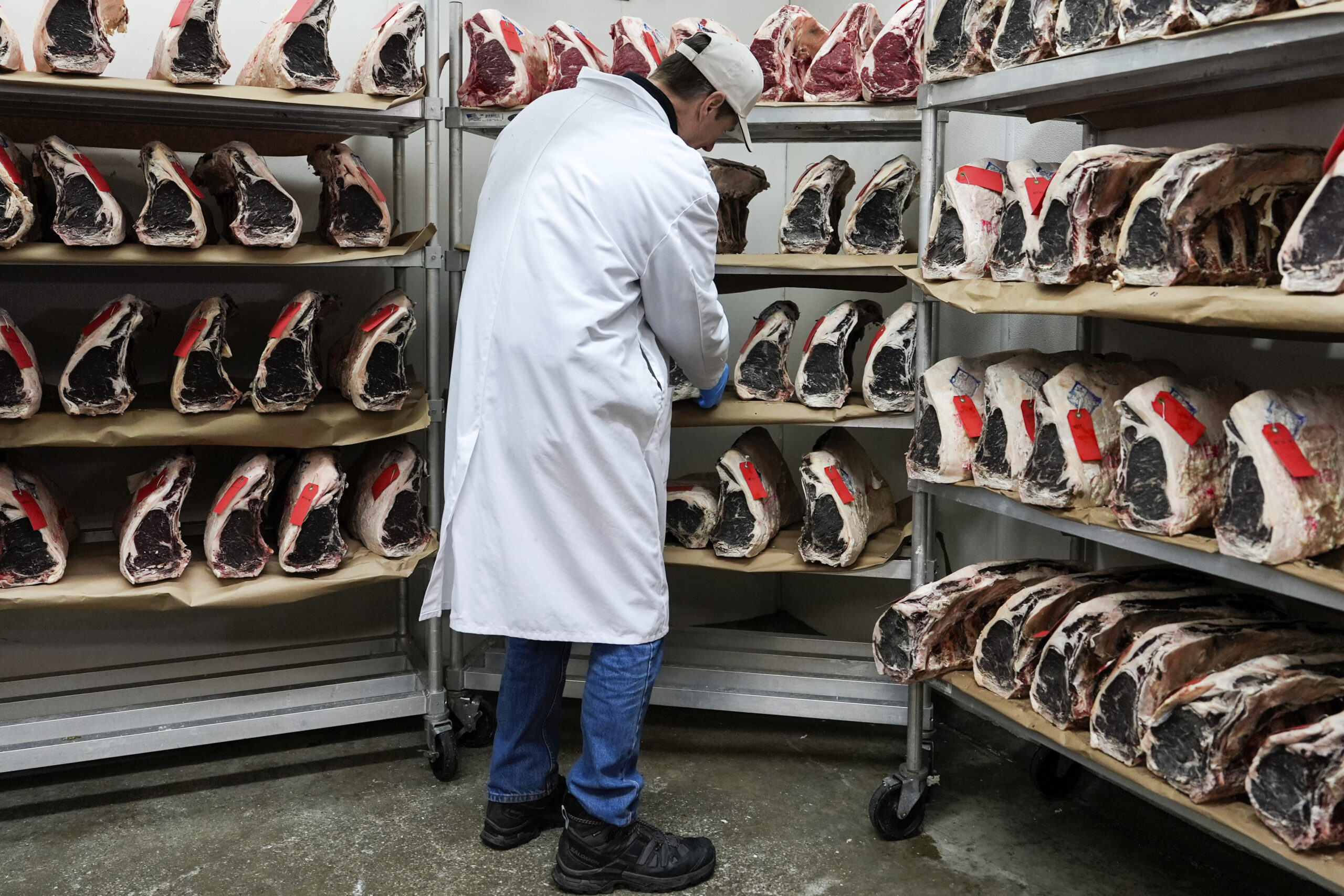John Jobbagy shows dry aged beef during an interview at J.T. Jobbagy Inc. in the Meatpacking District of Manhattan, Tuesday, Nov. 19, 2024, in New York. AP Photo/Julia Demaree Nikhinson
When John Jobbagy’s grandfather immigrated from Budapest in 1900, he joined a throng of European butchers chopping up and shipping off meat in a loud, smelly corner of Manhattan that New Yorkers called the Meatpacking District.
Today only a handful of meatpackers remain, and they’re preparing to say goodbye to a very different neighborhood, known more for its high-end boutiques and expensive restaurants than the industry that gave it its name.
Jobbagy and the other tenants in the district’s last meat market have accepted a deal from the city to move out so the building can be redeveloped, the culmination of a decades-long transformation.
“The neighborhood I grew up in is just all memories,” said Jobbagy, 68. “It’s been gone for over 20 years.”
In its heyday, it was a gritty hub of over 200 slaughterhouses and packing plants at the intersection of shipping and train lines, where meat and poultry were unloaded, cut and moved quickly to markets. Now the docks are recreation areas and an abandoned freight line is the High Line park. The Whitney Museum of American Art moved from Madison Avenue next to Jobbagy’s meat company in 2015.
Some of the new retailers maintain reminders of the neighborhood’s meat-packing past. At the exposed brick entrance to an outlet of fashion brand Rag & Bone, which sells $300 leather belts, is a carefully restored sign from a previous occupant, “Dave’s Quality Veal,” in red and white hand-painted lettering.
Another sign for a wholesale meat supplier appears on a long building awning outside Samsung’s U.S. flagship phone store.
But the neighborhood no longer sounds, smells or feels like the place where Jobbagy began working for his father in the late 1960s. He worked through high school and college summers before going…
Read the full article here

Leave a Reply